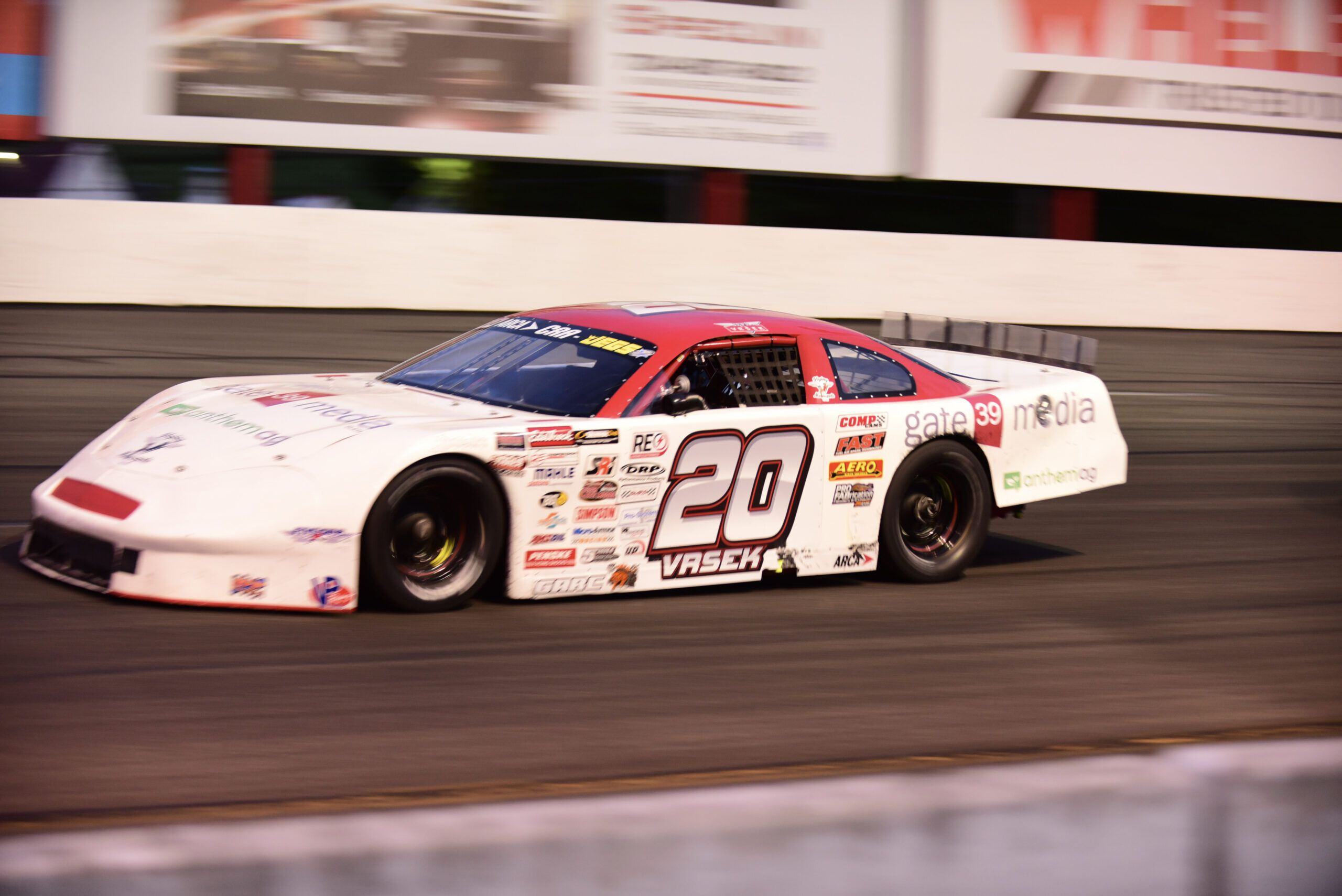
How to Digitally Track Marketing ROI on Offline Sponsorship Efforts

 Your company was just approached to sponsor your local Little League team, or even, dare I say it…a race car team. How do you track marketing ROI on an offline source, like sponsorship?
Your company was just approached to sponsor your local Little League team, or even, dare I say it…a race car team. How do you track marketing ROI on an offline source, like sponsorship?
In a digital world, it’s easy for companies to be able to track their digital and even print marketing dollars (though it’s a little more difficult) to site traffic, sales, or overall brand awareness among consumers.
Track Marketing ROI with Sponsorship Marketing Basics
“Start by asking, ‘What’s the purpose of this sponsorship?’” said sponsorship consultant Alex Striler, author of the book Motorsports Marketing and Sponsorships: How to Raise Money to Race and Give Sponsors What They Really Want:
- Is it to increase awareness?
- Is it to open distribution channels?
- Is it to generate sales leads?
- Is it to give away samples?
- Is it to create a hospitality environment for brands to meet each other and perhaps get business-to-business deals going?
- Is it to create content that can be used to promote your company on social media?
If you know the objectives, then you can determine if the sponsorship is working.”
Evaluate the proof of performance. From baseball teams to racecar drivers, they will get hung up on the performance in the event. It’s not all about how you finished on the podium, but the amount of engagement and eyeballs the event (and you) captured.
For example, the ARCA Menards Series race held in Toledo, OH in 2019 drew an estimated 143,200 household viewership on NBC Sports Network. In addition, the race was rebroadcast on MAVTV for increased viewership with the average fan being 35-54 years old, employed with a high propensity to brand loyalty on ARCA sponsored cars. Factor in team social media engagement promoting and thanking their sponsors (Flying V Motorsports averages 1,400 organic – no paid boost – interactions per race post) and you have a recipe for success.
Brand Loyalty & Social Sentiment
Brand loyalty is an interesting factor when considering a sponsorship. Race fans are a loyal group. Personally, my husband will go out of his way to support a brand that sponsors a race car versus one that does not. Did I ever think I would utter those words? No. But here we are, a racing brand loyal household. The measurement for brand loyalty isn’t just sales, but how an individual speaks about your product whether on a social media post or customer review.
From the “Elusive Measurement Dilemma of Sports Sponsorship ROI” by Michael Wolfe, Semantic Engagement Index (SEI™) “uses social media as the raw material for building a more effective and predictive metric. This approach converts textual reviews (from social media or other similar textual sources) into a metric.
What is different about this approach is that it uses a linguistics-based method for “scoring textual data”. The fundamental approach is based on the idea that it is not just words that matter, but also “how” customers write about brands and sports events.”
The algorithm ranks “like” less than “love”, pronouns of ownership when speaking about a product (ex: “My racecar” vs “The race car” or “My marketing agency Gate 39 Media” vs “Gate 39 Media”), etc. “This makes sense because this metric can capture the engagement and emotion fans and customers have towards a sport or event. It also makes sense in that this SEI™ has proven to link to and be highly correlated to brand sales across a number of different businesses.”
Tracking Incoming Leads – Digitally
Though the basics are great and establishing the purpose of sponsorship is key, capturing the leads that come from the digital traffic over the course of sponsorship is vital to track marketing ROI.
A CRM like HubSpot becomes the key component for this part of your sponsorship equation.
On race days or game days, is there an uptick in traffic to your website? I’m sure there is, if not on the day of, but in the coming days as pictures surface, people start to wonder, “what does that company do?” Does your website have various calls to action to intrigue visitors to sign-up for a newsletter or contact you to learn more about your company? If not, that is a wasted lead walking out the virtual door.
FREE CHECKLIST: How to Run an Inbound Marketing Campaign
Your website is intriguing, and a potential prospect wants to learn more and submits a form. HubSpot has built-in workflows to automatically direct these leads to the correct individuals within your company based on the prospect’s input.
HubSpot can help classify a prospect as being a marketing qualified lead or a sales qualified lead based on different criteria you set up, and the system can automatically pass these leads off to sales, or directly to sales for a one-to-one follow-up. Talk about timesaving.
This process eliminates the manual transfer of leads, ties qualified leads back to campaigns (or sponsorships), and allows for an automated process to take hold.
Tracking Incoming Leads – Offline
There are some events as part of your sponsorship that may not lead directly to a digital engagement to track. For example, attending a tradeshow with the racecar as part of the booth setup or receiving a list of sponsors and contacts of the entire Little League organization.
A CRM is not normally built to track offline as a source for leads, however, it can be done.
A well-known insurance payment platform client of ours was able to accomplish this, not with a racecar sponsorship, but with tradeshow leads. Regardless of the industry, you are in, tradeshows and networking events are a staple.
Utilizing HubSpot, this company took a long hard look at its data set. How were leads being categorized currently? HubSpot has a category for everything digital from social media to organic channels, but only one category for offline leads.
These offline sources were always uploaded manually via an Excel spreadsheet or business card scanner. The company didn’t have a workflow set up to distribute leads upon entry into the database and there they sat until a digital engagement occurred.
You know exactly what I’m talking about, shake all the hands, collect all the cards, have 1,001 conversations, and run out of time following the tradeshow for direct follow-up.
The company took these offline leads, and created a workflow in HubSpot for automated follow-up and nurturing after the tradeshow.
Based on responses and engagement, the leads were funneled (automatically) to the correct department to continue to drive interest and a potential sale.
No lead was left unattended, and reporting was established to bring the data to life. This level of reporting also allowed the company to compare their tradeshow expenses to their other marketing efforts, like digital.
The Final Lap to Track Marketing ROI for Offline Sponsorship
Don’t write off your current sponsorship endeavors as brand awareness dollars or avoid sponsorships in general because of their hard-to-track ROI.
- Set the purpose of your sponsorship
- Track proof of performance through engagement, time on screen if televised and audience demographics
- Explore a Sematic Engagement Index tracking how your brand is promoted via social media and reviews
- Ensure your website is engaging with a call-to-action to capture the digital traffic pre-, during and post-event
- Implement a CRM strategy for follow-up in the event leads occur outside of the digital space
Enjoy the heck out of whatever sponsorship you partake in and know that you can always find an ROI!
Want to talk more about how to track marketing ROI for events and sponsorship? Book a quick call with me and let’s make cool things happen!
—
You may also be interested in:
Editor’s Picks
If you've been living inside HubSpot like we have, you know the true magic is in the small, hidden tricks—those little shortcuts that save hours and...


Connect with us to discover how we can help your business grow.
.jpg)

